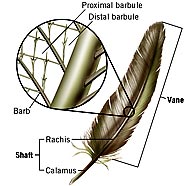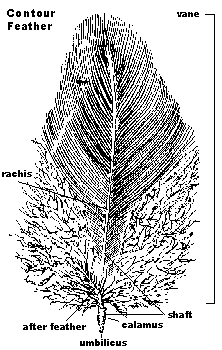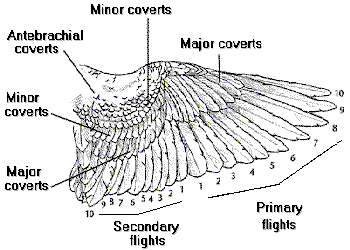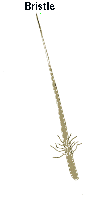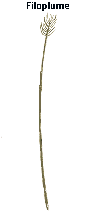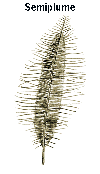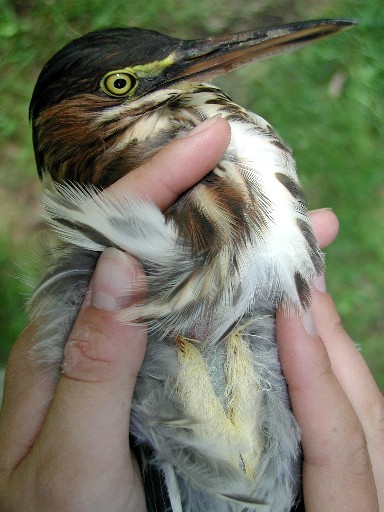STRUCTURE OF A CONTOUR FEATHER
TYPES OF FEATHERS
NUMBERS OF FEATHERS (see below)
PTERYLOSIS
(see below) capital tract
|

Source: http://www.birdersworld.com/amazingbirds/1996/9604_feather.html
|
Fantastic feathers: form and function
Why are birds different colors?

Source:
Prum and Brush 2003

Image source: http://zenofstem.com/project/using-the-sem/
Numbers of feathers (from Chaplin, S. and J. Faaborg. 1988. Laboratory Manual and Field Exercises. Ornithology: An Ecological Approach. Prentice-Hall, Inc., Englewood Cliffs, NJ):
- Primaries - "Most birds have 10 primaries, but . . . grebes, strorks, and flamingos have 12, herons, ducks, and gulls have 11, and several families of Old and New World passerines have 9."
- Secondary remiges - "The number of secondary remiges is even more variable, ranging from 6 to 32, and is a result of variability in the length of the forearm (ulna). Hummingbirds have the fewest secondaries (6), most passerines have 9 (rarely 10 or 11), while vulture species have 17 to 21, and albatrosses up to 32."
- Alula feathers - "The number of alula feathers varies from only 2 quills in hummingbirds to as many as 5 or 6 in some cuckoos. In most passerines, they number 3 or 4 . . ."
- Rectrices - "Most birds have 12 rectrices (6 pair), although there are many exceptions. Hummingbirds, swifts, most cuckoos, motmots, and toucans have 10, some rails and grebes have 8, and a few very small tropical passerine birds have 6. On the other hand, a few species that utilize their tail feathers as part of their sexual display have more than 12: for example, ptarmigan (16), prairie chicken and Ring-necked Pheasant (18), male peafow and Blue Grouse (20)."
Feather tracts:
Although the shape and distribution of pterylae vary among different families and orders of birds, eight major pterylae or feather tracts can generally be identified. These include the: (1) alar tract, including primary and secondary flight feathers plus coverts, (2) caudal tract that includes the rectrices and coverts, (3) capital tract, including all feathers on the head, (4) spinal tract (or dorsal) that extends along the mid-dorsal line and includes the cervical, interscapular, dorsal, and pelvic regions; see Figures below), (5) humeral tract that extends from where the leading edge of the wing meets the body over the dorsal surface to the trailing edge of the wing, (6) femoral tract located on the dorsal surface of the thigh, (7) crural tract located on the lower leg, and (8) ventral tract that includes cervical, sternal, and abdominal regions (see Figures below). The presence of pterylae and apteria, and differences among birds in their shape and distribution, may (1) be adaptations for reducing the total weight of the feathering, (2) better accommodate the movements of the body and the feathers, and (3) aid in thermoregulation via loss of body heat from apteria (Stettenheim 2000).
